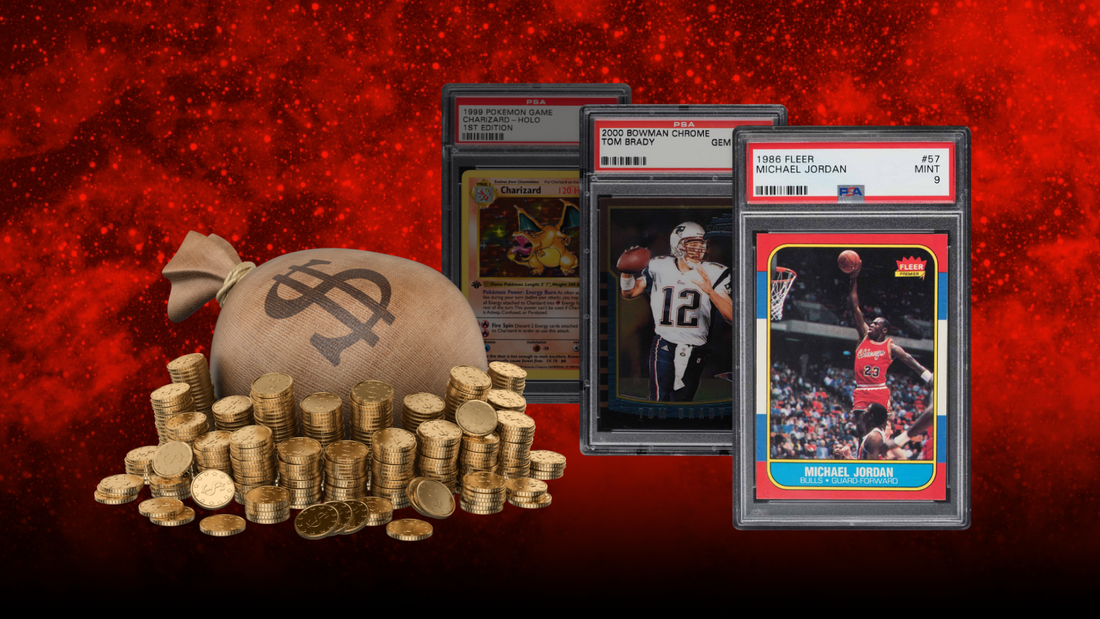
How to Make Money Selling Sports Cards: Beginner’s Guide for 2025
By Jason Bolton June 30, 2025 06:57
The sports card market in 2025 is booming like never before, presenting a lucrative opportunity for beginners to turn a hobby into a profitable venture. With the global sports trading card market valued at approximately $11.5 billion in 2024 and projected to nearly double by 2034, growing at a compound annual growth rate (CAGR) of around 7.5% to 13.3%, the timing couldn’t be better to get involved. Here’s a beginner’s guide on how to make money selling sports cards in today’s dynamic market.
1. Understand the Market Landscape
The sports card market has evolved beyond simple collectibles. Today, it’s a sophisticated ecosystem driven by scarcity, player potential, grading, and digital innovation. Rookie cards of emerging stars in basketball, baseball, and football are particularly hot commodities. For example, 2025 rookie cards of NBA phenoms like Victor Wembanyama and NFL stars like Caleb Williams have seen significant appreciation, with some limited-edition graded cards increasing in value by over 50% in recent months.
Market analyst Sarah Jenkins explains, “The sports card market is no longer just a niche hobby; it’s a serious investment vehicle. Collectors focus on players with both talent and marketability, which drives explosive growth in card values.” Veteran dealer Mike Reynolds adds, “Grading and scarcity are key. PSA 10 or BGS 9.5 cards with low population numbers can command five to ten times the price of lower-grade versions.” This underscores the importance of card condition and professional grading in maximizing resale value.
2. Start with Research and Education
Before buying or selling, immerse yourself in the hobby. Learn about different sports, players, card brands (like Topps, Panini, and Upper Deck), and grading companies (PSA, Beckett, SGC). Follow market trends through auction sites, forums, and social media groups. Understanding which rookie cards and limited editions are trending can help you make informed purchasing decisions.
3. Source Cards Smartly
Begin by acquiring cards from reputable sellers, local card shops, or online marketplaces. Look for rookie cards, autographed editions, and limited print runs, which tend to hold or increase in value. Emerging stars from the 2025 rookie classes in basketball, baseball, and football are prime targets. For instance, baseball’s Gunnar Henderson and football’s Bijan Robinson are generating buzz among collectors.
4. Invest in Professional Grading
Grading authenticates a card’s condition and significantly boosts its marketability. Cards graded PSA 10 or BGS 9.5 command premium prices. While grading fees can be an upfront cost, the return on investment often justifies it. Reynolds advises, “If you want to maximize profits, invest in grading. It’s the difference between a card selling for $100 and $1,000.”
5. Leverage Digital Platforms
The rise of digital sports cards and NFT platforms has expanded the market. Websites like eBay, StockX, and specialized card marketplaces provide easy access to buyers worldwide. Digital platforms also offer tools to track pricing trends and demand, helping sellers time their sales strategically.
6. Build a Network
Networking with other collectors, dealers, and investors can provide valuable insights and access to exclusive deals. Attend card shows, join online communities, and engage with influencers who share market updates and tips.
7. Be Patient and Strategic
The sports card market can be volatile. Not every card will skyrocket overnight. Jenkins cautions, “Successful collectors think long-term and focus on players with sustained potential.” Patience and timing are crucial to maximizing profits.
The 2025 sports card market offers exciting opportunities for beginners willing to learn and invest wisely. With a combination of research, smart sourcing, professional grading, and leveraging digital tools, selling sports cards can become a profitable venture. As the market continues its upward trajectory, fueled by nostalgia, digital innovation, and a new generation of collectors, those who approach it strategically stand to benefit significantly.


































































